

Why Creative Teaching is Essential For the Information Age - Education. There’s a belief in this country that every student should graduate from high school with the same standard set of knowledge.
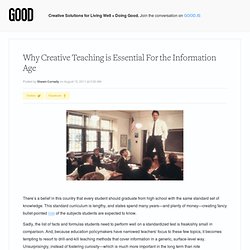
This standard curriculum is lengthy, and states spend many years—and plenty of money—creating fancy bullet-pointed lists of the subjects students are expected to know. Sadly, the list of facts and formulas students need to perform well on a standardized test is freakishly small in comparison. And, because education policymakers have narrowed teachers' focus to these few topics, it becomes tempting to resort to drill-and-kill teaching methods that cover information in a generic, surface-level way. Unsurprisingly, instead of fostering curiosity—which is much more important in the long term than rote memorization—this approach causes students to tune out. 7 Ways to Increase Student Engagement in the Classroom Infographic. K12 Infographics Why do we want learners of all ages to be engaged during instruction?

Because involved students learn more efficiently and are more successful at remembering what they learned. In addition, students who are engaged in learning are more likely to become passionate about learning in general. Student engagement is one byproduct of effective instruction that has major pay offs. Now that you know how to measure your students’ level of engagement, how can you increase the amount of time that students in your class are engaged in your instruction? Do you have any other suggestions? Via: www.readinghorizons.com Embed This Education Infographic on your Site or Blog! Six Strategies for Differentiated Instruction in Project-Based Learning.
Project-based learning (PBL) naturally lends itself to differentiated instruction.
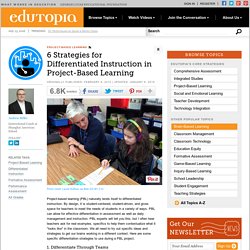
By design, it is student-centered, student-driven, and gives space for teachers to meet the needs of students in a variety of ways. PBL can allow for effective differentiation in assessment as well as daily management and instruction. PBL experts will tell you this, but I often hear teachers ask for real examples, specifics to help them contextualize what it "looks like" in the classroom. Lifelong Achievement Group. Motivating students to learn. Dr Andrew Martin, MAPS Motivation is students' energy and drive to learn, work effectively, and achieve to their potential at school.
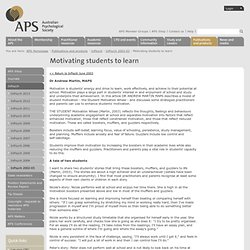
Motivation plays a large part in students' interest in and enjoyment of school and study and underpins their achievement. In this article DR ANDREW MARTIN MAPS describes a model of student motivation - the Student Motivation Wheel - and discusses some strategies practitioners and parents can use to enhance students' motivation. THE STUDENT Motivation Wheel (Martin, 2003) reflects the thoughts, feelings and behaviours underpinning academic engagement at school and separates motivation into factors that reflect enhanced motivation, those that reflect constrained motivation, and those that reflect reduced motivation. These are called boosters, mufflers, and guzzlers respectively. Boosters include self-belief, learning focus, value of schooling, persistence, study management, and planning.
3 Ways To Relinquish Control. Students + Control = Motivation = Teacher – Control?
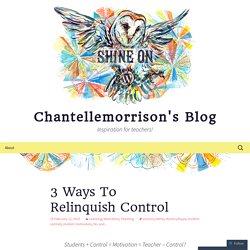
Here’s the thing about control… It’s difficult to share. I actually don’t know if it can be shared. It can definitely be distributed though. When I learned to drive, my instructor had one of those cars that had a brake and a clutch on the passenger’s side as well as the driver’s side. If and when she felt I was not in control, she could take control of the situation by bringing the car to a stop. Assessment Strategies for Flipped Learning Experiences. Flipped classroom assessment strategies that work It goes without saying that the flipped class design differs in fundamental ways from more traditional learning environments.
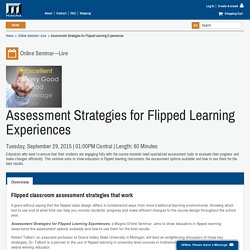
Knowing which tool to use and at what time can help you monitor students' progress and make efficient changes to the course design throughout the school year. Assessment Strategies for Flipped Learning Experiences, a Magna Online Seminar, aims to show educators in flipped learning classrooms the assessment options available and how to use them for the best results. Robert Talbert, an associate professor at Grand Valley State University in Michigan, will lead an enlightening discussion of these key strategies. Dr. What Is The Role Of Content In Flipped Classrooms? In a flipped classroom, students ‘attend’ the lesson outside of the classroom, typically in the form of teacher presentation videos or animated slide shows that can be viewed online, and in more sophisticated instances, followed by some diagnostic tests to indicate the progress of each student in the understanding of the material presented in that lesson.
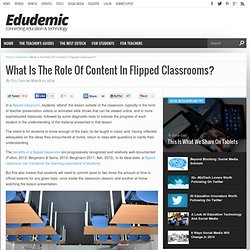
The intent is for students to know enough of the topic (to be taught in class) and, having reflected adequately on the ideas they encountered at home, return to class with questions to clarify their understanding. The benefits of a flipped classroom are progressively recognized and relatively well-documented (Fulton, 2012; Bergmann & Sams, 2013; Bergmann 2011; Ash, 2012). In its ideal state, a flipped classroom can transform the learning experience of students. Why Flip? Getting students to spend more time studying or learning can be a tall order, especially when faced with a topic that they do not see much need for knowing.
Listing of Leadership Activities and Group Games. Introducing the Student-Led Classroom. Reading Chapter 3 of Learn Like a Pirate (you can see my blog post HERE) got me so excited about next year.
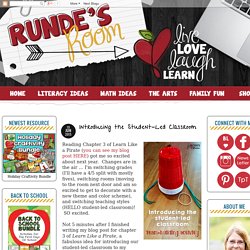
Changes are in the air ... I'm switching grades (I'll have a 4/5 split with mostly fives), switching rooms (moving to the room next door and am so excited to get to decorate with a new theme and color scheme), and switching teaching styles (HELLO student-led classroom)! SO excited. Not 5 minutes after I finished writing my blog post for chapter 3 of Learn Like a Pirate, a fabulous idea for introducing our student-led classroom to my students popped into my head and I started writing a new blog post (and as an added bonus, I got to put off doing the dishes for a little while longer).
The Activity: One of my favorite team-building activities to do on the first day is a cup-stacking challenge - you can read more about it HERE and HERE. How I Will Change the Activity: The first thing is to change the way the cups were stacked at the beginning.